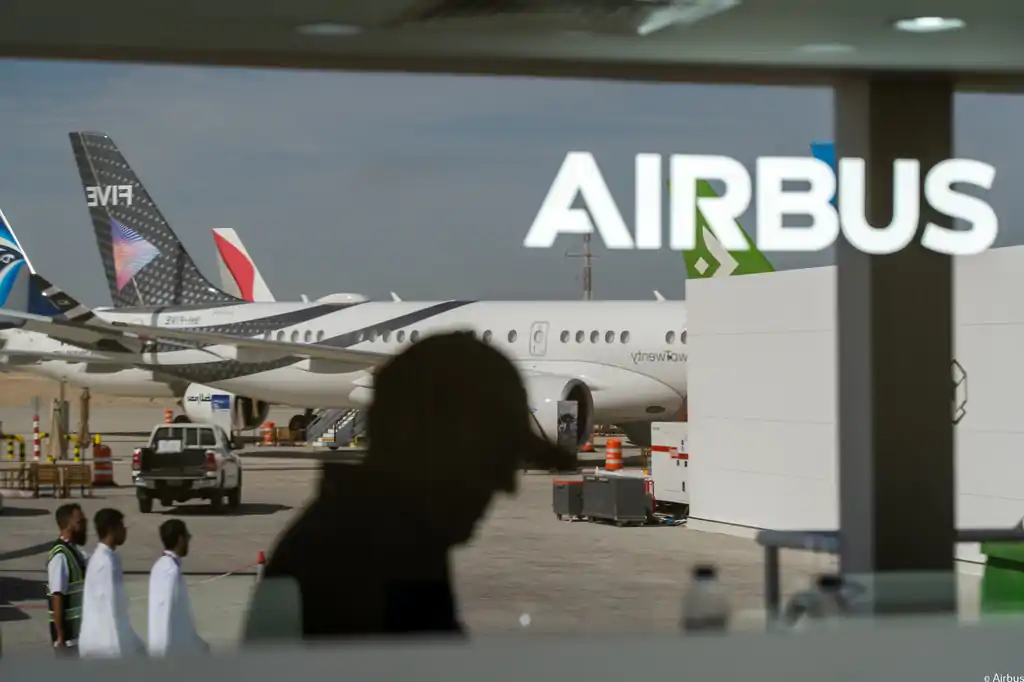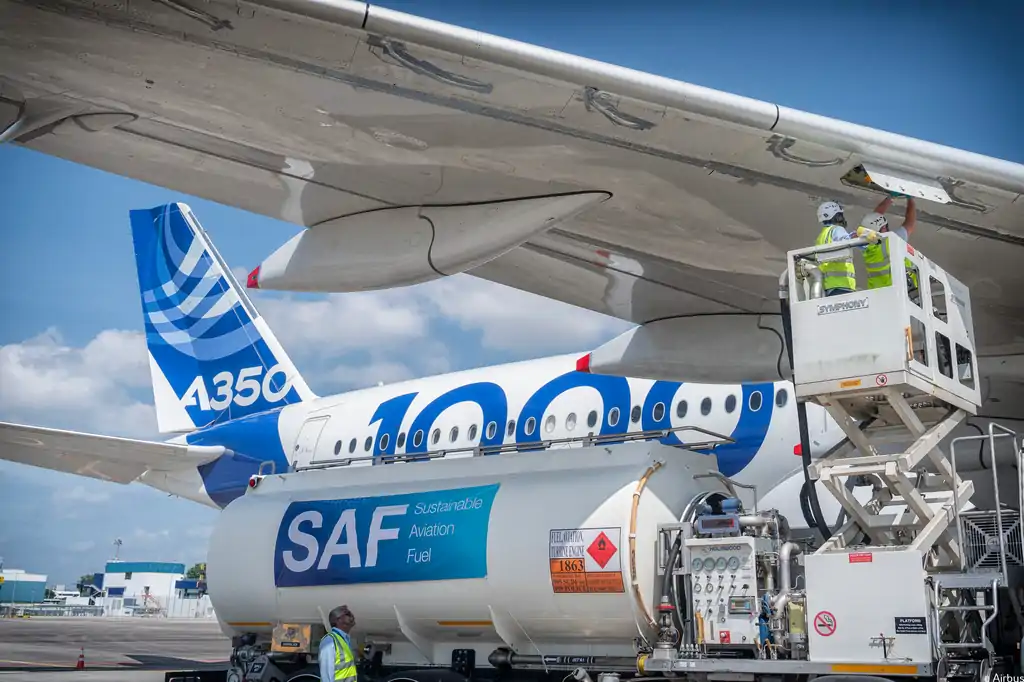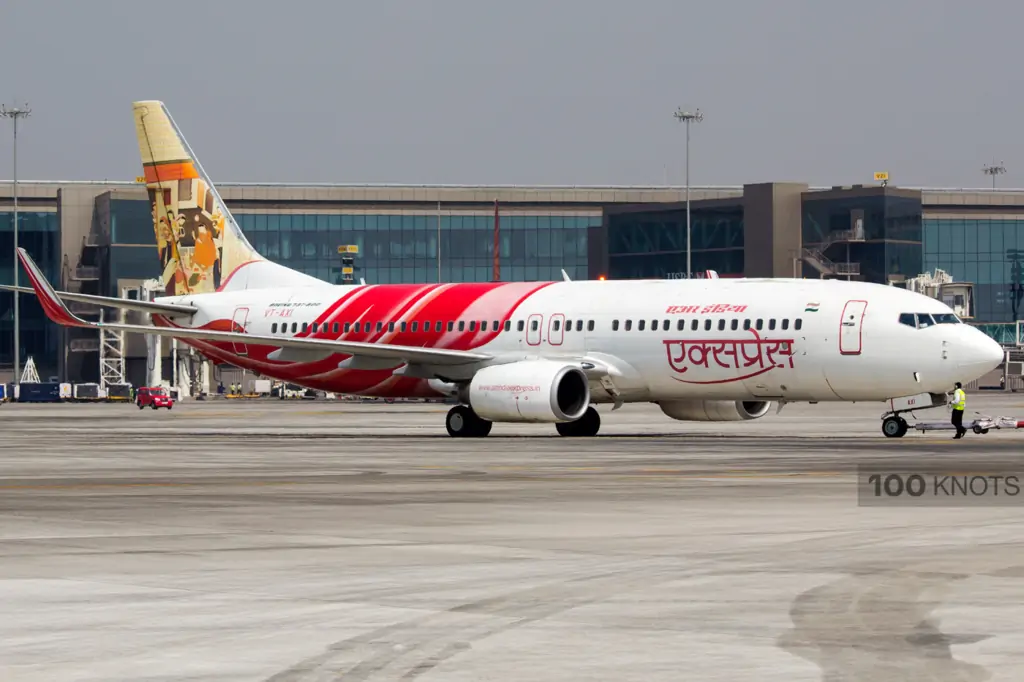Is Technology Driving Up Airfares? A Closer Look at Air Vistara's Pricing Controversy
Abhishek Nayar
27 Jul 2024

In a recent development that has sparked significant concern, Union Civil Aviation Minister Ram Mohan Naidu Kinjarapu has promised an inquiry into allegations of abrupt fare hikes by Air Vistara. The issue came to light after complaints from Members of Parliament (MPs) and a prompt from Lok Sabha Speaker Om Birla. This article delves into the allegations, the technology potentially involved, and the broader implications for air travel pricing in India.
The Allegations
Complaints from MPs
During a Question Hour session in Lok Sabha, DMK member Dayanidhi Maran raised a critical issue through a supplementary question. He alleged that whenever he attempts to book a ticket on Air Vistara for the Chennai-Delhi route, the initial fare displayed is around Rs 25,000. However, by the time he completes the booking process, the fare escalates two to three times. This has raised suspicions about potential technological manipulations driving up the prices.
Technology's Role
Maran speculated whether some technology applied by Tata Consultancy Services (TCS), a software giant belonging to the same Tata group that owns Air Vistara, could be responsible for this price surge. This allegation points towards a possible use of sophisticated algorithms or dynamic pricing models that adjust fares based on demand and booking patterns.
Official Response
Intervention by Lok Sabha Speaker
Lok Sabha Speaker Om Birla intervened in the discussion, revealing that he had received similar complaints from other MPs. Emphasizing that the money for the tickets comes from Parliament, Birla called for a thorough investigation into the matter. Responding to this, Minister Ram Mohan Naidu assured that the issue would be thoroughly examined.
Minister's Commitment
Minister Naidu reiterated his commitment to making air travel affordable for common people. He acknowledged that airfare is market-driven, influenced by various factors such as seasonality, holidays, fuel costs, and competition. Naidu emphasized that "Customer is king" and affirmed the ministry's dedication to ensuring affordable air travel.
Dynamics of Airfare Pricing
Market-Driven Pricing
Airfare pricing is a complex process influenced by multiple factors. Naidu explained that airline pricing operates in multiple levels (buckets or RBDs) following global practices. Due to dynamic fare pricing, tickets bought in advance are cheaper than those purchased closer to the travel date.
Regulatory Framework
Under Rule 135(1) of the Aircraft Rules, 1937, airlines are free to set their tariffs considering factors like operational costs, service characteristics, and prevailing tariffs. The Directorate General of Civil Aviation's (DGCA) Tariff Monitoring Unit ensures that fares charged by airlines align with the established tariffs. Currently, there is no proposal to intervene with the existing regulatory framework on airfare.
Broader Implications
High Airfare During Holiday Seasons
The minister also addressed concerns about high airfares during holiday seasons on international routes. He highlighted that the government does not regulate fares set by airlines, whether Indian or foreign. Instead, fares are influenced by seasonality, holidays, festivals, fuel costs, and competition.
Ensuring Fair Practices
As the inquiry into Air Vistara's pricing practices unfolds, it raises important questions about the transparency and fairness of dynamic pricing models. Ensuring that customers, including MPs, are not unfairly charged is crucial for maintaining trust in the aviation sector.
Conclusion
The allegations against Air Vistara have opened a broader discussion about the role of technology and market dynamics in airfare pricing. As the Civil Aviation Ministry conducts its inquiry, the findings could have significant implications for regulatory practices and consumer trust in the aviation industry. The commitment to affordable air travel remains a priority, and this investigation will be closely watched by stakeholders and travelers alike.
Read next
In a bold move to tackle aviation's carbon footprint, the UK has launched an initiative aimed at promoting sustainable aviation fuel (SAF). Announced at the Farnborough Airshow, the plan includes a price guarantee for SAF to spur investment and production. However, airline executives caution that global adoption and enhanced strategies are essential for this green technology to revolutionize air travel.
The Current State of SAF: A Long Road Ahead
Despite airlines' commitment to biofuels two decades ago, SAF constitutes a mere 0.2% of the jet fuel market. The industry aims to increase this to 65% by 2050 to achieve net-zero carbon emissions. However, the blame game between airlines and SAF producers has stalled progress. Airlines demand more green fuel, while producers await market-priced commitments from airlines. The steep cost—up to five times higher than traditional jet fuel—further complicates the issue.
UK’s Price Guarantee: A Step Forward
Britain's Labour government recently introduced a price guarantee for SAF, aiming to attract producers and expand infrastructure. This policy, similar to Singapore's SAF levy, is designed to alleviate cost burdens on airlines and encourage sector-wide participation. Julie Kitcher, Airbus's Chief Sustainability Officer, emphasized the need for solid investment plans and sector-wide financial support to scale up SAF production.
The Investment Dilemma
Airline executives agree that reducing SAF costs is crucial to prevent skyrocketing ticket prices. Luis Gallego, CEO of British Airways-owner IAG, praised the UK's decision but warned of the need for significant price reductions. The industry's thin profit margins leave little room for sustainability investments, making government intervention essential.
The Growing Fleet: A Double-Edged Sword
While next-generation energy-efficient aircraft promise reduced emissions, the projected doubling of the global aircraft fleet over the next two decades poses a challenge. Environmental advocates argue that increased plane numbers will offset efficiency gains. Matt Finch of Transport and Environment highlighted the insufficiency of current SAF volumes to meet the growing demand.
Policy and Production: The Need for Speed
Recent developments, such as Shell pausing a SAF facility's construction in Rotterdam, have alarmed green advocates. Even with stronger governmental support, the construction and operationalization of new SAF plants will take years. Virgin Atlantic CEO Shai Weiss and other executives stress that while the UK’s policy is a positive move, it is far from sufficient.
The Call for Legislative Action
Executives insist that the burden of decarbonization, estimated to cost trillions, should not fall solely on airlines. Ghaith al-Ghaith, CEO of flydubai, called for greater government involvement to boost SAF availability. Legislators must provide the necessary frameworks and incentives to make green jet fuel a viable reality.
Conclusion: The Path to Cleaner Skies
The UK’s initiative marks a significant step towards sustainable aviation. However, achieving the ambitious goal of 65% SAF by 2050 requires global cooperation, substantial investments, and robust policy support. As the industry navigates these challenges, the dream of radically cleaner flying hinges on collective action and commitment from all stakeholders.
With Inputs from Reuters
Read next
As the aerospace industry gathers at the prestigious Farnborough Airshow, industry leaders are sounding cautiously optimistic tones despite ongoing supply chain challenges. Executives from Airbus and Boeing highlighted both the hurdles and the strides being made towards overcoming these obstacles, aiming to reassure stakeholders and customers alike.
Airbus: Facing Challenges Head-On
Delphine Bazaud, head of industrial supply chain and digital operations at Airbus, acknowledged the industry's supply chain hiccups but remained confident in the company’s trajectory. “We are ramping up. We will be ramping up in the future… We need to do it to meet [customers] expectations,” Bazaud asserted on July 23rd.
This optimism comes even after Airbus announced a delay in its ambitious plan to produce 75 A320neos annually, pushing the target from 2026 to 2027. Bazaud’s comments reflect a determined approach to meet market demands despite the setbacks.
Boeing: Slowing Down to Speed Up
Boeing’s vice-president of global supply chain and fabrication, Ihssane Mounir, described the company's recent production slowdown as a strategic move to fortify their fundamentals. “The ramp up is going to be significant for all OEMs as we move forward… We have to be ready for it to avoid disappointing our customers,” Mounir emphasized.
Boeing aims to return to a production rate of 38 monthly 737s this year, a critical step towards stabilizing its supply chain and meeting growing customer demand.
Industry Analysis: A Complex Web of Challenges
Raman Ramanathan, EY’s aerospace and consulting leader, provided a broader industry perspective, noting that the recovery has been impeded by airlines operating older jets longer than planned. These aging aircraft often suffer unexpected component failures, increasing the demand for replacement parts and exacerbating supply chain issues.
“The confluence of things exacerbated the problem,” Ramanathan explained, highlighting the compounded challenges of new-generation engine issues, such as those seen with the Pratt & Whitney PW1100Gs and CFM International Leaps. Over 1,000 PW1100Gs were recalled due to metallic-component problems, further complicating the recovery process.
Innovative Solutions: Leveraging Technology and Communication
Ramanathan suggested that advanced data technologies, including machine learning, and improved communication between partners could help suppliers better manage these issues. The goal is to shift from a reactive to a proactive approach, addressing problems before they disrupt the supply chain.
GE Aerospace: Progress with Patience
Reflecting the persistent nature of supply chain challenges, GE Aerospace reported that its joint CFM International business with Safran Aircraft Engines delivered 297 Leap turbofans in the second quarter, a 29% year-on-year decrease. Despite this drop, GE Aerospace remains hopeful. CEO Larry Culp told investors, “We are making some progress, but not enough to meet demand,” predicting a healthier, more stable, and higher production rate by year-end.
The Road Ahead: Cautious Optimism
While the aerospace industry faces significant supply chain challenges, the commitment and strategic adjustments by major players like Airbus, Boeing, and GE Aerospace signal a potential turning point. The emphasis on technological advancements and better communication suggests a path toward a more resilient and efficient supply chain.
As the industry navigates these turbulent times, the lessons learned and strategies implemented will shape the future of aerospace manufacturing, ensuring that companies are better prepared for the challenges ahead.
With Inputs from Flight Global
Read next
How Will Ryanair’s New Digital Flight Ops Agreement with Boeing Transform Its Fleet?
Abhishek Nayar
26 Jul 2024

Ryanair, Europe’s largest low-cost airline, has embarked on a strategic partnership with Boeing to enhance its digital flight operations. Announced at the Farnborough International Airshow on July 24, 2024, this multi-year agreement will see Boeing providing its cutting-edge Jeppesen FliteDeck Pro 5.0 electronic flight bag (EFB) solution to Ryanair’s next-gen 737 and 737 MAX fleet. This collaboration is poised to revolutionize Ryanair’s operational efficiency, safety, and sustainability.
The Game-Changer: Jeppesen FliteDeck Pro 5.0
What is FliteDeck Pro?
Boeing's Jeppesen FliteDeck Pro 5.0 is the latest iteration of its EFB solution, designed to streamline and enhance the capabilities of airline operations. As a platform-agnostic tool, FliteDeck Pro offers a variety of advanced features such as airport moving maps, customer-inserted content, and tailored route information. This integration aims to provide Ryanair with the most efficient and safe flight operations.
Key Features and Benefits
- Tailored Route Information: FliteDeck Pro delivers customized route information, enabling Ryanair pilots to access precise navigation data, which helps in optimizing flight paths and reducing flight times.
- Smart Airport Maps: These maps are designed to optimize taxi routes on the ground, significantly reducing fuel consumption and improving ground safety. The Smart Airport Maps feature is expected to enhance the overall efficiency of Ryanair’s fleet management.
- Enhanced Pilot Briefings and Route Planning: The solution offers advanced pilot briefings and comprehensive route planning tools, ensuring that pilots are well-prepared for every flight scenario.
- Real-Time Data and Insights: By providing real-time data and traffic features, FliteDeck Pro enables better decision-making processes and enhances the overall flight operations of Ryanair.
Statements from Industry Leaders
Ryanair’s Perspective
Neal McMahon, Chief Operations Officer of Ryanair, expressed enthusiasm about the new partnership, stating, “We are excited to integrate Boeing’s newest electronic flight bag into our operations. This advanced tool will optimize our flight operations, minimize disruptions, and enhance efficiency across our expanding fleet.”
Boeing’s Commitment
Brad Surak, Vice President of Boeing Digital Aviation Solutions, highlighted the benefits of the latest FliteDeck Pro version, stating, “Our latest version of FliteDeck Pro includes enhanced pilot briefings, route planning and traffic features. This technology enables Ryanair with real-time data and insights, enhancing decision making and flight operations.”
The Impact on Ryanair’s Operations
Operational Efficiency
The integration of FliteDeck Pro 5.0 is set to enhance Ryanair’s operational efficiency by providing pilots with advanced tools for navigation and route optimization. This is expected to result in reduced flight times and lower fuel consumption, contributing to cost savings and environmental sustainability.
Safety Enhancements
With features like Smart Airport Maps, the EFB solution will improve ground safety by optimizing taxi routes and reducing the risk of ground incidents. Real-time data and traffic insights further ensure that pilots can make informed decisions, enhancing overall flight safety.
Sustainability Goals
By minimizing fuel consumption and optimizing flight routes, Ryanair can make significant strides towards its sustainability goals. The use of FliteDeck Pro aligns with the airline’s commitment to reducing its carbon footprint and promoting eco-friendly operations.
Conclusion
The partnership between Boeing and Ryanair marks a significant milestone in the airline’s journey towards digital transformation and operational excellence. With the integration of Jeppesen FliteDeck Pro 5.0, Ryanair is set to enhance its flight operations, safety measures, and sustainability efforts, ensuring a more efficient and eco-friendly future for its fleet. This collaboration underscores the importance of adopting advanced digital solutions in the aviation industry, setting a new standard for airline operations worldwide.
Read next
Airbus Aims for the Skies: The Next Generation of Fuel-Efficient Narrowbody Aircraft
Abhishek Nayar
26 Jul 2024

As the aviation industry continues to strive for higher fuel efficiency and lower emissions, Airbus is taking significant steps towards a future marked by innovative engine technology and sustainable aviation fuels (SAF). The buzz surrounding Airbus' plans for a new narrowbody aircraft, potentially a successor to the A320neo family, has taken center stage at the Farnborough International Airshow 2024.
A Glimpse into the Future: Airbus' New Narrowbody Aircraft
At the Farnborough International Airshow 2024, Julie Kitcher, Airbus’ Chief Sustainability Officer, provided insights into the company’s future plans. Kitcher emphasized Airbus' commitment to continually improving fuel efficiency with each new generation of aircraft. This strategy aims for a 25% improvement in fuel efficiency, thereby significantly reducing emissions.
“For every new generation of aircraft, we increase fuel efficiency, and therefore reduce fuel emissions by around 25%, so we are always pushing for new generation technologies in materials and engines. It is essential to stay that one technological leap ahead. We have got the latest generation technology available today,” Kitcher stated.
The Role of Rolls-Royce and Open Fan Engines
Christian Scherer, the CEO of Airbus Commercial Aircraft, hinted at the possibility of Rolls-Royce engines powering the successor to the A320neo. However, Scherer highlighted that Airbus' primary focus was on an open fan engine. CFM International, which currently provides the LEAP-1A engine for the A320neo family, is developing the CFM RISE open fan propulsion system.
Dual Focus: Hydrogen and Sustainable Aviation Fuel (SAF)
Kitcher elaborated on Airbus' dual approach towards future aircraft propulsion systems. While developing the next-generation aircraft, Airbus is also advancing hydrogen technology. This parallel development ensures that future aircraft can operate on SAF and potentially hydrogen, aligning with Airbus' sustainability goals.
Kitcher emphasized the importance of SAF: “At the same time, we are working on hydrogen technology to have a hydrogen-powered aircraft. The two will complement each other.”
The ZEROe Program: Pioneering Hydrogen Aircraft
To spearhead hydrogen aircraft development, Airbus launched the ZEROe program, featuring four prototype aircraft: a turbofan, a turboprop, a blended-wing body (BWB), and a fully electric concept. Airbus has even repurposed the first A380, manufacturer serial number (MSN) 001, as a testbed for hydrogen technologies.
In February 2022, Airbus CEO Guillaume Faury announced that the company would focus on two hydrogen technologies for the ZEROe platform: liquid hydrogen and hydrogen fuel cells. Airbus plans to officially launch the aircraft program by 2027 or 2028, with an entry-into-service (EIS) date in 2035.
Next Generation Single Aisle (NGSA): A Clean-Sheet Design
Airbus is also working on the successor to the A320neo family, referred to as the Next Generation Single Aisle (NGSA). Unlike derivatives or stretched versions of current models, the NGSA will be a clean-sheet design, emphasizing fuel efficiency and sustainability. Faury indicated that the NGSA's EIS would be in the latter part of the 2030s.
Competition and Collaboration: Boeing's Parallel Path
Airbus' main competitor, Boeing, shares a similar vision for future aircraft. At the Bloomberg Economic Forum in May 2023, Boeing's outgoing CEO David Calhoun highlighted the need for new aircraft designs to be at least 20% to 30% more efficient than previous models to justify the substantial development costs.
The Path Ahead
As Airbus continues to innovate and push the boundaries of aircraft technology, the focus remains on sustainability and efficiency. With a commitment to developing engines that can run on 100% SAF and advancing hydrogen propulsion systems, Airbus is poised to lead the industry into a new era of aviation. The upcoming years promise exciting developments as Airbus and its competitors race to create the next generation of environmentally friendly and fuel-efficient aircraft.
Stay Tuned
Keep an eye on Airbus and the broader aviation industry as they navigate the complexities of sustainable aviation. The innovations and advancements unveiled in the coming years will shape the future of air travel, making it cleaner, greener, and more efficient for generations to come.
Read next
Air India Express is embarking on a transformative journey, significantly expanding its capacity in both domestic and international markets. This strategic move comes as the airline recently inducted its 75th aircraft, a Boeing 737, marking a milestone in its growth trajectory.
Over the past ten months, the airline has added 26 new Boeing 737-8 aircraft, greatly increasing its daily flight operations. This expansion aims to enhance connectivity, especially to tier-II and tier-III cities, and to bolster international routes, creating a more seamless travel experience for passengers.
Expansion Plans and New Destinations
Air India Express is set to increase its flight frequencies to West Asia and Southeast Asia, areas that have shown substantial demand. Currently, the airline serves 14 international destinations, including 13 in West Asia and Singapore, along with over 30 domestic destinations. The number of flights, exceeding 380 daily, is expected to rise as the airline expands its network to 50 stations. Notably, plans are underway to initiate flights to Dhaka and Kathmandu, further solidifying its international presence.
Boosting Domestic Connectivity
The airline's focus on increasing its domestic footprint in smaller towns and cities is designed to support the long-haul flights of its parent company, Air India. This strategic integration enables passengers from cities like Ranchi to travel on a single itinerary to far-flung destinations such as San Francisco or New York, thanks to a codeshare agreement with Air India. This seamless connectivity is expected to enhance passenger convenience and streamline travel experiences.
Innovative Services and Value Propositions
In its quest to enhance the passenger experience, Air India Express is introducing several innovative services. One such offering is unbundled services, including a zero-baggage fare option, allowing passengers to customize their travel experience. The airline's entry into the package holiday business, branded as XpressHolidays, enables passengers to book comprehensive tour packages alongside their flight tickets.
Partnerships and Ancillary Services
Leveraging its significant passenger base, which includes over a million international and domestic travelers monthly, Air India Express has forged strategic partnerships to offer additional services. The collaboration with Zoom Car allows passengers to rent self-drive cars directly through the airline’s website or mobile app, while a partnership with Avis Cars offers chauffeur-driven options. Furthermore, the airline has introduced a fare lock service, enabling passengers to secure domestic fares for Rs 250 and international fares for Rs 500 for up to seven days.
FlyPorter and Mergers
Another innovative service, FlyPorter, offers a hassle-free baggage handling solution where passengers' luggage is picked up from their doorstep and delivered to their destination. Additionally, the recent NCLT order approving the merger of AIX Connect (formerly AirAsia India) into Air India Express provides a significant boost, consolidating operations and expanding service capabilities.
Conclusion
Air India Express’s ambitious expansion and innovative service offerings are set to revolutionize air travel, providing enhanced connectivity, greater convenience, and a superior travel experience for passengers. As the airline continues to grow and adapt to market demands, travelers can look forward to more options and improved services, making air travel more accessible and enjoyable.
With Inputs from Financial Express




Comment